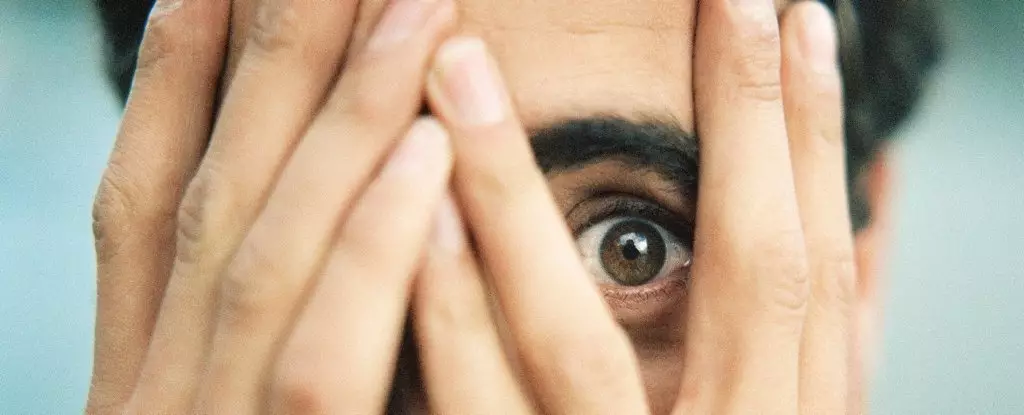In a world that increasingly emphasizes mindfulness and focus, the subtle act of fidgeting often goes unnoticed or dismissed. Yet, for many, witnessing someone else’s repetitive movements can be not just bothersome, but intensely distressing. This unusual sensitivity to others’ physical motions is known as misokinesia, a term derived from Greek that translates to “hatred of movements.” Though few may recognize it, this phenomenon affects a significant portion of the population, with studies indicating that up to one-third of individuals experience discomfort in response to fidgeting.
The Psychological Underpinnings
Misokinesia has long been intertwined with misophonia, a condition characterized by strong emotional reactions to specific sounds, such as chewing or tapping. While both conditions involve heightened sensitivity, misokinesia is primarily visual. Research spearheaded by Sumeet Jaswal at the University of British Columbia delves into the emotional response elicited by the sight of fidgeting, ranging from slight annoyance to overwhelming anger and anxiety. Yet, despite its prevalence, misokinesia remained largely underexplored until recent academic inquiries illuminated its complexities.
Through rigorous study involving over 4,100 participants—including university students and members of the general population—researchers have painted a clearer picture of misokinesia’s impact. They reported that this sensitivity is not limited to individuals with clinical disorders but represents an ordinary social challenge that many navigate on a daily basis. It raises the question: how can something as seemingly innocuous as fidgeting provoke such strong reactions from others?
Emotional Fallout
The emotional toll that misokinesia exacts on individuals can be profound. Those who experience this sensitivity often report feelings of frustration, anxiety, and anger, which interfere with their ability to enjoy social interactions and hinder productivity in work or educational settings. Todd Handy, another researcher involved in the study of misokinesia, underscored that such emotional distress can lead individuals to withdraw from social situations altogether, risking isolation and exacerbating their discomfort.
The phenomenon touches on the broader landscape of human interactions, highlighting how individual differences can shape social dynamics. With many people coping with the distress of fidgeting in others, this calls for an expanded understanding of how sensory reactions, particularly visual ones, contribute to the fabric of communal and occupational life.
The Cognitive Mechanisms Behind Misokinesia
In an effort to unravel the cognitive origins of misokinesia, researchers explored the idea that heightened sensitivity could stem from visual-attentional mechanisms. They sought to determine whether an inability to filter out distracting movements in one’s peripheral vision was responsible for the conditions experienced by individuals with misokinesia. However, initial findings led to inconclusive outcomes. This gap in understanding points to a rich area for further investigation, as the intricacies of human perception remain largely uncharted.
One compelling avenue worth exploring further stands out: the role of “mirror neurons.” These brain cells are activated not only when we perform actions but also when we observe others undertaking those actions. For misokinesia sufferers, observing someone fidget might trigger an involuntary echo of their own anxiety or discomfort, creating a cascade of empathetic sensations that ultimately manifest as distress.
The Interplay Between Anxiety and Fidgeting
At the core of this phenomenon is an intriguing paradox: those who fidget often do so as a response to their own anxiety. In this light, misokinesia-prone individuals could unconsciously relate to the emotional state of the fidgeter, experiencing a disconcerting overlap of nerves. The act of watching another person fidget may inadvertently heighten their own anxiety levels. This cycle of discomfort prompts important questions about empathy, human behavior, and our collective capacity for emotional contagion.
To better understand this interplay, further research is necessary, especially considering that misokinesia may involve difficulties in disengaging from visual stimuli rather than merely responding to distractions. Such insights can illuminate the neural pathways at work and lead to more targeted interventions for those who are affected.
Confronting Misokinesia in Daily Life
As society navigates these multifaceted interactions, awareness is crucial. There’s a powerful opportunity here for greater understanding and management of misokinesia in social settings. For those who experience this phenomenon, realizing they are not alone in their discomfort can be profoundly reassuring. Cultivating awareness among friends, colleagues, and family can not only foster empathy but also lead to potential strategies for coexistence that minimize fidget-related stress.
Ultimately, as societal understandings of mental and sensory experiences evolve, acknowledging and addressing conditions like misokinesia will pave the way for a more inclusive and supportive environment. Understanding our responses to the world around us can transform our interactions, turning potential barriers into opportunities for connection and mutual support.

